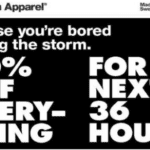Headlines have changed. The days of pun-tastic headlines that you’d see in The Sun are dying because spreading news online is a whole different animal. Online, there is constant noise, constant competition, and you have to stand out to be noticed.
Clever, funny, complicated headlines just don’t work in this environment because if the reader isn’t told what to expect, they won’t click. It’s as simple as that. But for all its simplicity, this new type of online headline-writing comes with constantly changing trends and techniques. There are five major types of article headline. They all have their merits. Let’s have a look at them.
Relational headlines — (aka ‘As Much As You’ headlines)
You’ve seen a whole bunch of these (see what I did there?). Examples of this type of headline include ’16 Cats Who Love Pizza As Much as You’. Essentially, these are a great way of making an obscure theme or news item relatable and therefore clickable. ’16 Cats Who Really Love Pizza’ would not get as many clicks or shares. Writing headlines is a constant battle against people thinking ‘I don’t care’, by making the subject more directly relevant to the reader, you get them interested.
There’s also a hidden challenge in a lot of these types of headlines, the reader might think ‘More than me? Not possible!’ But they’ll still click. Which brings me on to…
Challenging belief headlines — (aka ‘You Won’t Believe…’ headlines)
An example of this is ’25 Incredibly Scary CCTV Shots… You Won’t Believe Number 16′ or ‘You Won’t Believe What These People Found In Their Attic’. These headlines are annoying. Everyone finds them annoying. And they’ve been around so long, everyone knows exactly what they’re trying to do. But a strange type of reverse psychology has developed around this type of headline which means they still work. Rather than being brought in and actually expecting to be surprised, the reader will think ‘I bet I won’t be’ and then click to be proved right. Everyone likes to be right.
Location-specific headlines
For example, ’15 Things Anyone Who Went To Uni In Leeds Knows To Be True’. You’d think these kinds of headlines would limit your audience. And they do. But in a very clever way. These headlines make people feel included. Everyone who did go to Uni in Leeds, to stick with that example, will click on this. They’ll probably share it too. Everyone who knows somebody who went to Uni in Leeds will send this to said friend. That’s a surefire audience of tens of thousands. Make people feel like they’re in a little club and shares are a guarantee. This has viral potential.
Confrontational Headlines
These include things like ’15 Reasons Not To Visit Barcelona’ or ’15 Reasons Women Shouldn’t Lift Weights’ followed by sarcastic content that contradicts the headline. These work well because they make the reader go ‘Wait, what?’ The content then confirms a belief they already had — once again, proving them right, which everyone enjoys. It seems counter-intuitive, but people don’t generally click on a headline that expresses a belief they already have. For example, very few people will click a headline that says ‘Chocolate is tasty’ or ‘Puppies are cute’. Go for ‘Puppies are actually really ugly, here’s why’ and you’ll get an awful lot of people interested.
Hype creating headlines (aka ‘Everyone Is Talking About’ headlines)
For example, ‘Everyone Is Talking About This New Pizza Place In Brooklyn’ or ‘Everyone is Buying These Crazy New Running Shoes’. These work because people want to be included. Just like location-specific headlines work by making people feel inclusion. These work by making people feel out of the loop, but providing an instantaneous route back in. The sub-text is ‘Here’s something you don’t know about that everyone else does. Quick, read this to catch up’.
There are so many of these types of headlines and they also work in endlessly various combinations. But, for the time being, at least, they work. If you want your content to get noticed online, this is the way to bring the attention to it. Go for it.
Interested in knowing more about Dark Social & Analytics?
[su_button url="https://getsocial.io" target="_blank" style="flat" background="#21D2B5" color="#ffffff" size="7" wide="no" center="yes" radius="auto" icon="" icon_color="#FFFFFF" text_shadow="none" desc="" onclick="" rel="" title="" id="" class=""]SIGN UP FOR FREE[/su_button]





